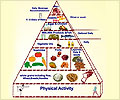The World Health Organization (WHO) has released the first-ever guidelines outlining measures to follow in order to ensure good housing conditions for the better overall health of the population and to prevent disease.
Highlights:
- Housing quality is becoming a major social factor determining health in view of climate change such as global warming, the rise in the elderly population and the spurt in urban growth and population
- In addition to physical and mental well being, a state of good health also includes social well being which is influenced by social factors such as housing, occupation, income and education
- Healthy housing involves giving protection not only from physical harm such as extremes of temperature and animals but also privacy, emotional security and a sense of belonging
TOP INSIGHT
Quality of housing is becoming a major social determinant of health due to the increasing urban population, rise in elderly population and importantly climate change. Healthy housing involves giving protection not only from physical harm but also privacy, emotional security and a sense of belonging.
Read More..
Importance of Healthy Housing to Maintain Health
Housing quality is increasingly becoming a major social determinant of the state of health of the population and unhealthy housing conditions are associated with an increased risk of diseases including heart attacks, respiratory disorders such as tuberculosis, illnesses related to extremes of temperature and injuries as well as premature death.At present, nearly one billion persons worldwide live in crowded housing conditions putting them at the above-mentioned health risks.
The possible causes of prevailing unhealthy housing conditions include shift of a large population from rural to urban areas seeking employment and better income and proliferation of slums with overcrowding and poor hygienic conditions.
Climate change due to global warming also exposes the poor socioeconomic strata to extremes of weather and harsh living conditions.
Factors in the neighborhood that can influence healthy housing include:
- Presence of a supportive local community which helps to improve social health and well being
- Presence of green spaces such as parks
- Access to important services such as hospitals, shops, schools and bus stops or train stations.
Key Points to Address while Providing Healthy Housing Conditions
- Presence of overcrowding due to inadequate living space
- Extremes of temperatures within the house
- Ensuring the safety of occupants and to prevent the risk of injury
- Houses should be user-friendly for persons with disabilities
- Air and water pollution
- Toilet facilities in all households
- Noise pollution due to loudspeakers etc
- Indoor air quality which may be poor due to the presence of radon gas
Possible Interventions to Improve Housing Conditions
- Renovation of existing homes as may be appropriate or build low-cost sustainable housing for the poor
- Governments should generate employment to improve family incomes
- Education of the residents to follow clean and hygienic practices to reduce disease spread
- Measures to maintain optimal indoor temperatures by means of insulation, weatherproofing and providing good ventilation depending on the local climate
- Reducing risk of injury and falls by providing good lighting, smoke detectors, hand railing support for elderly and window guards
- Modifications of fixtures to make the house safer especially the elderly and non-slippery flooring to reduce the risk of injury due to falls
- Articles of daily living and stuff within the house should be accessible to the elderly and persons with functional disabilities
- Local administration should enforce strict regulations to ensure good air quality and prevent noise pollution
- Provision of access to safe drinking water and redo outdated plumbing
Conclusion
In conclusion, the provision of healthy housing not only ensures the health of the population and improves the quality of life, but can also help reduce carbon emissions and counter climate change.References:
- Better housing means better health and well-being, stress new WHO guidelines - (https://news.un.org/en/story/2018/11/1026811)
- Housing impacts health: New WHO Guidelines on Housing and Health- (https://www.who.int/phe/news/note-media-housing-health-guidelines/en/)
- WHO Issues Global Guidelines On Prevention Of Unhealthy Housing - (https://www.healthpolicy-watch.org/who-issues-first-ever-guidelines-on-prevention-of-unhealthy-housing/)
Source-Medindia
 MEDINDIA
MEDINDIA





 Email
Email






